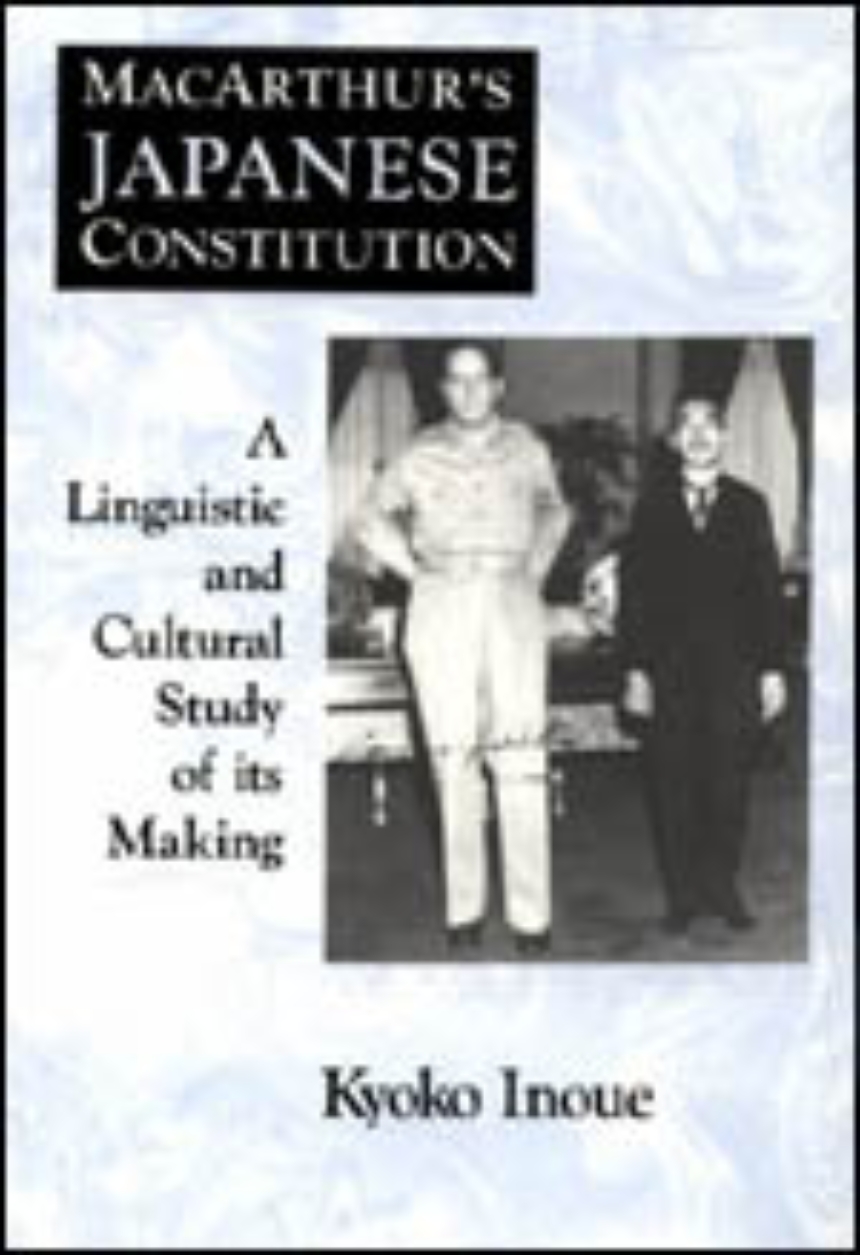MacArthur’s Japanese Constitution
The Japanese constitution as revised by General MacArthur in 1946, while generally regarded to be an outstanding basis for a liberal democracy, is at the same time widely considered to be—in its Japanese form—an document which is alien and incompatible with Japanese culture. Using both linguistics and historical data, Kyoto Inoue argues that despite the inclusion of alien concepts and ideas, this constitution is nonetheless fundamentally a Japanese document that can stand on its own.
"This is an important book. . . . This is the most significant work on postwar Japanese constitutional history to appear in the West. It is highly instructive about the century-long process of cultural conflict in the evolution of government and society in modern Japan."—Thomas W. Burkman, Monumenta Nipponica
"This is an important book. . . . This is the most significant work on postwar Japanese constitutional history to appear in the West. It is highly instructive about the century-long process of cultural conflict in the evolution of government and society in modern Japan."—Thomas W. Burkman, Monumenta Nipponica
386 pages | 6 x 9 | © 1991
Asian Studies: East Asia
History: General History
Language and Linguistics: Anthropological/Sociological Aspects of Language
Table of Contents
Preface and Acknowledgments
Introduction
1. A Chronicle of Events
2. The Meiji Restoration
3. The Role of the Constitution
4. Religious Freedom and the Separation of Religion and State
5. The Emperor
6. Individual Dignity and Equality of the Sexes in Marriage
Conclusion
Appendixes
1. The Constitution of Japan
2. The American Draft of the Constitution
3. Chapter III: "The Rights and Duties of the People"
4. The Meiji Constitution
5. Ueki Emori, Draft Constitution of the Great Japan of the Orient
References and Bibliography
Name Index
Subject Index
Introduction
1. A Chronicle of Events
2. The Meiji Restoration
3. The Role of the Constitution
4. Religious Freedom and the Separation of Religion and State
5. The Emperor
6. Individual Dignity and Equality of the Sexes in Marriage
Conclusion
Appendixes
1. The Constitution of Japan
2. The American Draft of the Constitution
3. Chapter III: "The Rights and Duties of the People"
4. The Meiji Constitution
5. Ueki Emori, Draft Constitution of the Great Japan of the Orient
References and Bibliography
Name Index
Subject Index
